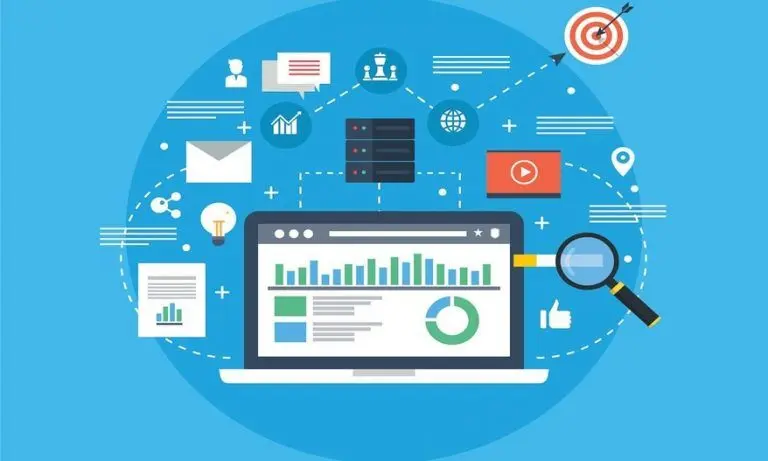Taking the world by simulation: The rise of synthetic data in AI

According to survey results, 96% of teams claim to use synthetic data in some capacity for developing computer vision models. It's interesting to note that 81% of respondents said they use synthetic data in quantities at least equivalent to those of manual data.
The essence of modern technology is quality training data. The hardest aspect is selecting the correct data and extracting crucial information from it. The most advanced artificial intelligence and machine learning systems have always been constrained by a lack of data availability, reliability, and access. The idea of synthetic data and also its function in the field of AI is not new. Although it has been around for a while, many organizations still do not understand its significance.
Large amounts of data are needed to solve many business issues that AI/ML models might already address. Even today, gathering the vast quantities of high-quality data necessary to create the most trustworthy AI and ML models is difficult. We talked about synthetic data and the way it is changing the field of AI in this article.
About synthetic data
Synthetic data is data that is produced artificially rather than by genuine methods. It is frequently developed with the use of algorithms and is applied to a variety of tasks, such as testing data for new tools and products, model validation, and training AI models. One sort of data augmentation is synthetic data.

Importance of synthetic data
The power of synthetic data to provide features that otherwise wouldn't be possible with real-world data makes it crucial for a variety of applications. Synthetic data is a lifesaver when real data is scarce or when maintaining anonymity is of the utmost importance.
The artificial intelligence (AI) business industry is heavily dependent on this data.
- For assessing some disorders and circumstances when genuine data is lacking, the healthcare and medical industry use fake data.
- Artificial data is used to train self-driving Uber and Google vehicles.
- Fraud protection and detection are of utmost importance in the financial sector. Synthetic data can be used to investigate new fraudulent situations.
- Data professionals can access and utilize centrally stored data while still protecting its anonymity thanks to synthetic data. Synthetic data has the ability to mimic the key characteristics of genuine data without divulging its true meaning, maintaining privacy.
- In the research division, synthetic data enables you to create and offer cutting-edge goods for which the essential data might not otherwise be accessible.
Want to know more about Synthetic data, how is it being generated and utilized then read here!
Some benefits offered by Synthetic data are-
1. Full user control over synthetic data
In a simulation using synthetic data, everything is controllable. It has both blessings and drawbacks.
Because there are instances where edge circumstances that can be recorded in real datasets are missed by synthetic data, it can be a curse. You might wish to use transfer learning for these applications to mix some actual data with the synthetic datasets.
However, this is also a benefit because you may choose the event frequency, item distribution, and much more.
2. The annotation of synthetic data is flawless
The flawless annotation offered by synthetic data is another benefit. Never again will manual data collection be necessary.
Each object in a scene can automatically create a variety of annotations. This might not seem like a significant concern, but it's a major factor in the low cost of synthetic data in comparison to real world data. The labelling of data is free. Instead, the initial expenditure in creating the simulation is the primary cost of using synthetic data. The cost-effectiveness of creating data over genuine data increases rapidly after that.
3. Synthetic data is generally multispectral
Companies that manufacture autonomous vehicles have learned how difficult it is to annotate non-visible data. They have therefore been among the strongest supporters of synthetic data.
Many businesses produce fictitious LiDAR data using simulations. Because it is synthetic, the data is already categorized and the ground truth is known. For computer vision applications using infrared or radar imaging, when humans can't completely interpret the imagery, synthetic data works well.
The rise of synthetic data in AI
By 2024, 60% of the data utilized in the creation of AI would be synthetic instead of real, according to a Gartner report. The emergence of synthetic data is fundamentally altering the (geo)politics, ownership, strategic aspects, and economics of data. There are currently few ways to improve AI applications using fake data. The foundations of synthetic data are found everywhere, from robotics to basic security models.

1. Machine Learning
For the creation and testing of ML models, synthetic data is becoming increasingly important. Massive amounts of data, which may be hard to come by or create without synthetic data, are required to train machine learning algorithms. Synthetic data usage is becoming more and more popular due to their simplicity in data production, precision in labeling, adaptability of the variety of different applications, and suitability as a replacement for data containing sensitive information. A few uses which shows that synthetic data is revolutionizing the AI industry are listed below:
2. Robotics and the automotive industry
In order to train deep machine learning algorithms for use in a variety of applications, from self-driving vehicles to robotics, researchers are creating fake data. Real-world trials are required to train models that can function in self-driving simulations.
This can be costly, however employing synthetic data can lower expenses associated with data collection and aid in improving algorithm training. To train its safety systems and autonomous driving software, for instance, businesses like Tesla already employ synthetic data.
3. Development of Agile and DevOps
Training data, which are examples of the system in use created by humans, are used by artificial intelligence systems. In other words, even if an AI system is capable of doing a work efficiently than a person, the data it is trained on will be skewed toward human behavior.
An AI system, for instance, will find it challenging to learn how to communicate with humans in situations where there aren't any other humans present. The best impartial synthetic data can be produced as a solution to this issue.
In many cases, using synthetic data speeds up the development, validation, and validation of the model without compromising the application's correctness.
4. Data Protection
One of the biggest issues facing our society today is data security. Your email, social media posts, online purchasing history, articles read, and music listened to are all examples of data that has been gathered, kept, and utilised to determine who you are.
In order to create cutting-edge solutions for marketing, social networking sites, and commercial operations, synthetic data generated by algorithms for machine learning can imitate real-world sensitive data while harming data privacy and regulations.
5. Business Activities
Applications of machine learning to improve business processes include managing massive data sets, streamlining product operations, providing customer service, making financial decisions, and managing resources necessitate constant data generated and updated continuously.
A set of well-known facts and context can be utilised to generate solutions using synthetic data, which can shorten the time it takes to make a decision. Synthetic data may alter AI applications in ongoing business processes to increase productivity, from expanding business models to operations.
The way we produce and use data may change as a result of synthetic data. Small and medium-sized businesses now have access to AI applications they could never have imagined using their current resources. It offers a chance to scale and compete at the very same time.
The emergence of synthetic data is advancing AI innovation to a completely new level and eradicating all data constraints in the development of AI applications. A greater grasp of synthetic data as well as how to develop it depending on your needs to accomplish your goals more quickly can be provided by a data science company.
To learn more about how you can use artificial intelligence to enhance your life, click here.
Want to know more about how Labellerr can help you with training data, Contact us today!
Book our demo with one of our product specialist
Book a Demo
